Unveiling Bingling Temple Grottoes: A Must-Visit Destination for Culture Enthusiasts
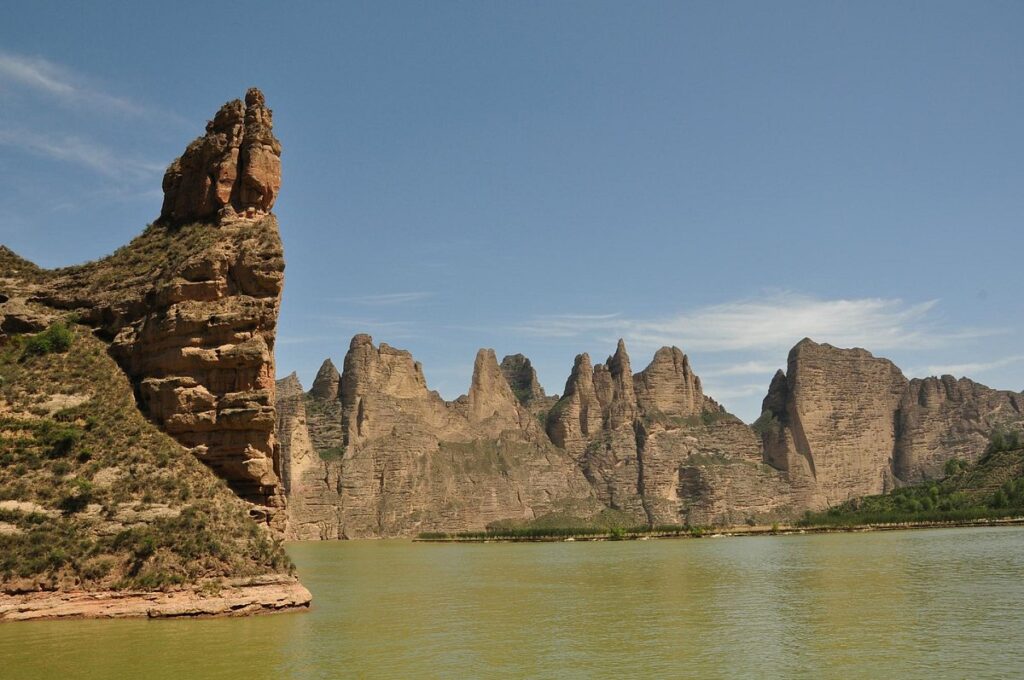
An Essential Guide to Visiting Bingling Temple Grottoes
Nestled along the banks of the stunning Yellow River in China’s Gansu Province, the Bingling Temple Grottoes are a remarkable fusion of natural beauty and ancient artistry. This UNESCO World Heritage site, dating back to the 4th century, features over 180 caves adorned with intricate sculptures and murals that tell the story of Buddhism’s evolution over the centuries. As you approach the grottos, you’ll be treated to breathtaking views of the surrounding mountains and the crystal-clear waters of the river, creating an atmosphere that feels both serene and sacred.
Visiting Bingling Temple Grottoes is more than just a sightseeing trip; it’s an adventure that beckons travelers to explore its hidden depths and rich history. The journey begins with a scenic boat ride across the reservoir, where the windswept landscape and dramatic cliffs set the stage for what lies ahead. Once you step onto the rocky pathways, you’ll find yourself surrounded by the mesmerizing artistry of colossal Buddha statues, delicate carvings, and ancient relics that reflect the craftsmanship of dynasties long past.
Whether you are an art enthusiast, a history buff, or simply seeking a unique escape from the tourist trails, Bingling Temple Grottoes offers an unforgettable experience infused with cultural significance and natural splendor. Prepare to be captivated by the sights, sounds, and stories of this extraordinary site that echoes the spirit of ancient China.
In This Guide
- An Essential Guide to Visiting Bingling Temple Grottoes
- The Rich History and Legends of Bingling Temple Grottoes
- Main Highlights: What You Absolutely Can’t Miss
- Planning Your Visit: A Practical Guide
- Tickets: Prices, Booking, and Tips
- How to Get There: A Complete Transportation Guide
- Local Cuisine and Accommodation Nearby
- Frequently Asked Questions
- Final Thoughts on Your Trip
The Rich History and Legends of Bingling Temple Grottoes
Nestled along the banks of the serene Yellow River, the Bingling Temple Grottoes are not just a visual feast but a treasure trove of history that spans over a millennium. These remarkable caves, carved into the cliffs of the canyon, are a testament to the artistic and spiritual evolution of Buddhism in China, dating back to the Western Qin dynasty (circa 420 AD).
The history of Bingling Temple Grottoes is deeply intertwined with the development of Buddhist art and architecture in the region. The site originally served as a Buddhist sanctuary, founded by an unknown monk who sought refuge in this remote area. Over the centuries, successive dynasties such as the Northern Wei, Tang, and Ming expanded and embellished the site, leading to the creation of over 180 caves adorned with stunning sculptures and murals. Each grotto showcases unique artistic styles that reflect the cultural influences of their respective eras, allowing visitors to trace the evolution of Buddhist iconography and craftsmanship.
One of the most striking features of the Bingling Temple is the colossal Maitreya Buddha, which towers over visitors at approximately 30 meters tall. This magnificent statue, carved into the canyon wall, embodies the aspirations of countless followers who have sought solace and inspiration within these ancient caves. However, the site has not been without its challenges. Over the years, natural erosion and human activity have taken a toll on many of the sculptures, prompting restoration efforts to preserve the integrity of this cultural heritage. While some restorations have sparked debate regarding their impact on the original charm of the artwork, they nonetheless serve to keep the history alive for future generations.
The legends surrounding the Bingling Temple Grottoes add another layer of intrigue to their rich narrative. Local folklore speaks of the site as a haven for monks and pilgrims who would undertake arduous journeys to seek enlightenment. The caves are said to house numerous relics, including sacred texts and artifacts left behind by wandering monks. These stories have imbued the site with a mystical aura, captivating the imaginations of those who visit.
In modern times, Bingling Temple Grottoes have become a beacon for travelers seeking to explore the less-trodden paths of China. Accessible via a scenic boat ride on the Yellow River, the journey to the grottoes itself is an adventure, offering breathtaking views of the surrounding landscape. Visitors are often greeted with a sense of tranquility as they step into the cool shadow of the cliffs, surrounded by the intricate artistry that tells stories of devotion, history, and resilience.
For international travelers, exploring the Bingling Temple Grottoes is not merely a visit to a historical site; it is an invitation to engage with the silent narratives etched into stone, to ponder the passage of time, and to appreciate the enduring spirit of Buddhism in this remarkable corner of the world. Whether you are an art enthusiast, a history buff, or simply a curious traveler, the Bingling Temple Grottoes promise a profoundly enriching experience, steeped in the rich tapestry of China’s past.
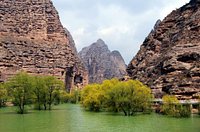
Bingling Temple Grottoes.
Main Highlights: What You Absolutely Can’t Miss
The Bingling Temple Grottoes, nestled along the banks of the stunning Yellow River in Tianshui, China, offer a mesmerizing blend of natural beauty and rich cultural history. This UNESCO World Heritage site is a treasure trove of ancient Buddhist art, making it a must-visit destination for any international traveler. Here are the main highlights that you absolutely can’t miss:
1. The Journey to the Grottoes
Your adventure begins even before you reach the grottoes. Most visitors take a scenic boat ride across the serene waters of the Liujiaxia Reservoir. The journey, lasting about 40 minutes, allows you to soak in breathtaking views of the surrounding mountains and the striking blue hues of the Yellow River. Remember to buy your tickets at the ferry terminal, as entrance fees cannot be purchased directly at the grotto site.
2. The Stunning Giant Maitreya Buddha
Upon arriving, one of the first sights that will captivate you is the colossal Maitreya Buddha. Standing at approximately 30 meters (over 100 feet) tall, this magnificent statue carved into the canyon wall is a testament to the artistic prowess of ancient craftsmen. Although some restoration work has altered its original charm, the sheer scale and presence of this statue are awe-inspiring.
3. Explore the Grottoes
Bingling Temple Grottoes boast over 183 caves, housing nearly 700 stone statues and numerous clay sculptures created across different dynasties. As you stroll along the wooden pathways that connect the grottoes, each cave reveals unique religious art and intricate details that reflect the evolution of Buddhist iconography. Pay special attention to the varied styles and attire depicted, showcasing the cultural shifts from the Western Qin Dynasty (420 AD) to the Qing Dynasty (1800 AD).
4. Scenic Walkways with Panoramic Views
The paths leading through the grottoes are beautifully maintained and offer picturesque views of the surrounding landscape. The contrast of the rugged canyon against the lush greenery provides countless opportunities for photography. Take your time to capture the moment, as the scenery is nothing short of spectacular.
5. Educational Insights
For those interested in history and art, the grottoes present an invaluable opportunity to learn about the Buddhist heritage in China. Informational plaques and guides provide context for the art and architecture, making your visit both enriching and enjoyable.
6. A Tranquil Atmosphere
Unlike many tourist hotspots, Bingling Temple Grottoes offer a serene and contemplative environment. With fewer crowds, especially during off-peak seasons, you can appreciate the site’s beauty and spiritual ambiance without distraction. This makes it an ideal spot for reflection, meditation, or simply enjoying nature.
7. Local Cuisine
Don’t miss the chance to savor local flavors after your exploration. Nearby towns offer delicious traditional dishes, including the famous Beef Noodles (Niu Rou Mien). This culinary experience is a delightful way to recharge after your adventure.
8. Accessibility Tips
While the journey to Bingling Temple Grottoes involves a bit of planning, it’s well worth the effort. Consider hiring a private driver for a more convenient experience, which allows you to avoid the boat ride if you prefer. Also, be prepared for varying weather conditions, especially if visiting in winter.
Final Thoughts
The Bingling Temple Grottoes are not just a visual feast; they are a deep dive into the history of Buddhism in China, surrounded by stunning natural landscapes. Whether you’re an art aficionado, a history buff, or simply in search of breathtaking views, this site promises an unforgettable experience. Make sure to include the Bingling Temple Grottoes on your itinerary for a truly remarkable journey through time and culture.
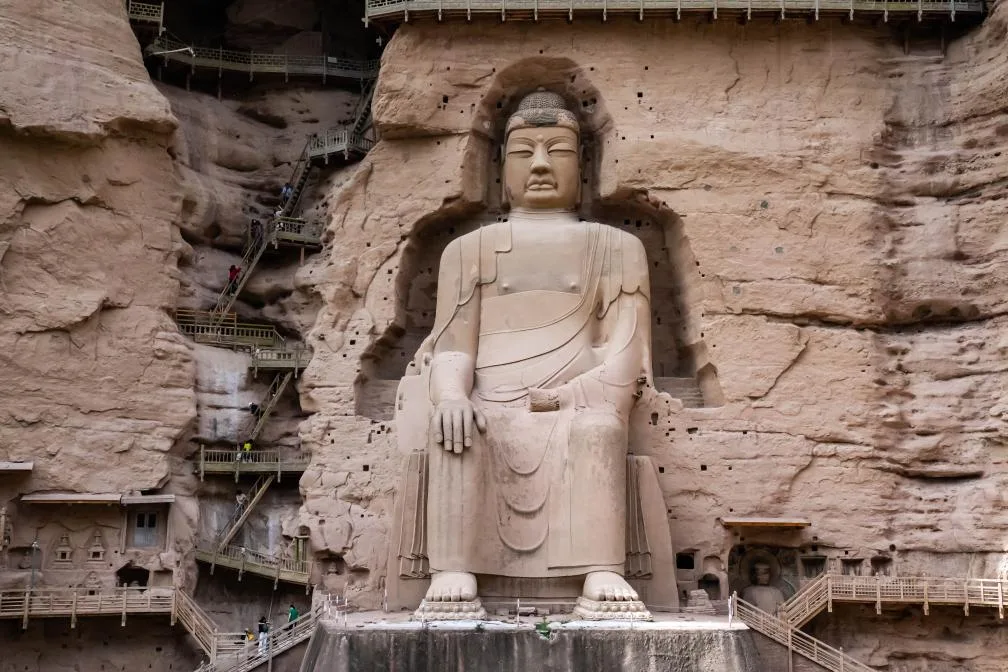
Bingling Temple Grottoes.
Planning Your Visit: A Practical Guide
Visiting the Bingling Temple Grottoes is an unforgettable experience that combines natural beauty, rich history, and cultural significance. Here’s how to make the most of your trip to this remarkable destination.
Getting There
Location: The Bingling Temple Grottoes are situated west of Yongjing County in Tianshui, Gansu Province, China.
Transportation Options:
– By Car: The most convenient way to reach the site is by hiring a private driver. This allows you to enjoy the scenic landscape along the way and provides flexibility in your schedule. Expect a journey of approximately three hours from Lanzhou.
– By Boat: The adventure begins at the Liujiaxia Dam, where you’ll need to purchase your tickets at the ferry terminal. A speedboat ride across the reservoir takes roughly 40 minutes, offering stunning views of the surrounding mountains and the famous blue Yellow River. Note that the boats are enclosed, but opening the windows will allow you to feel the wind as you ride.
Ticketing Information
- Entry Fee: The entrance fee to the Bingling Temple Grottoes is approximately 80 RMB. Keep in mind that tickets can only be purchased at the docking area, not at the entrance to the grottos.
- Discounts: Seniors may receive free or discounted entry, so it’s worth inquiring at the ticket booth.
What to See
The Bingling Temple Grottoes feature over 180 caves containing an impressive collection of Buddhist sculptures and murals that span several dynasties, from the Western Qin (420 AD) to the Qing (1800 AD). Highlights include:
– The Maitreya Buddha: A colossal statue carved into the canyon wall, standing at around 30 meters tall. While it has undergone restoration, it remains a significant attraction.
– Smaller Caves and Statues: Wander through numerous grottoes filled with intricate sculptures, each reflecting different artistic styles and cultural influences across the centuries.
Tips for Your Visit
- Timing: Arrive early to avoid crowds and make the most of your experience. A morning visit can provide a more serene atmosphere for exploration and photography.
- What to Bring:
- Water and Snacks: Amenities are limited, so it’s wise to carry refreshments.
- Comfortable Shoes: Expect to do a fair bit of walking, including stairs and uneven pathways.
- Weather Gear: Depending on the season, temperatures can vary. In winter months, dress warmly with layers, including jackets, gloves, and scarves.
- Health and Safety: Bring your health clearance or any required documentation on your mobile device, especially if traveling during times when health regulations are in place.
Nearby Attractions
If time allows, consider visiting nearby sites such as:
– Liujia Gorge: A scenic area perfect for more exploration and photography.
– Local Cuisine: After your visit, treat yourself to local dishes like beef noodles (Niu Rou Mien) at nearby restaurants, which are highly recommended by travelers.
Conclusion
The Bingling Temple Grottoes offer a blend of adventure, breathtaking scenery, and cultural richness that is truly off the beaten path. Whether you choose to travel by car or boat, the effort will be well worth it as you uncover this historical treasure nestled against the backdrop of stunning natural landscapes.
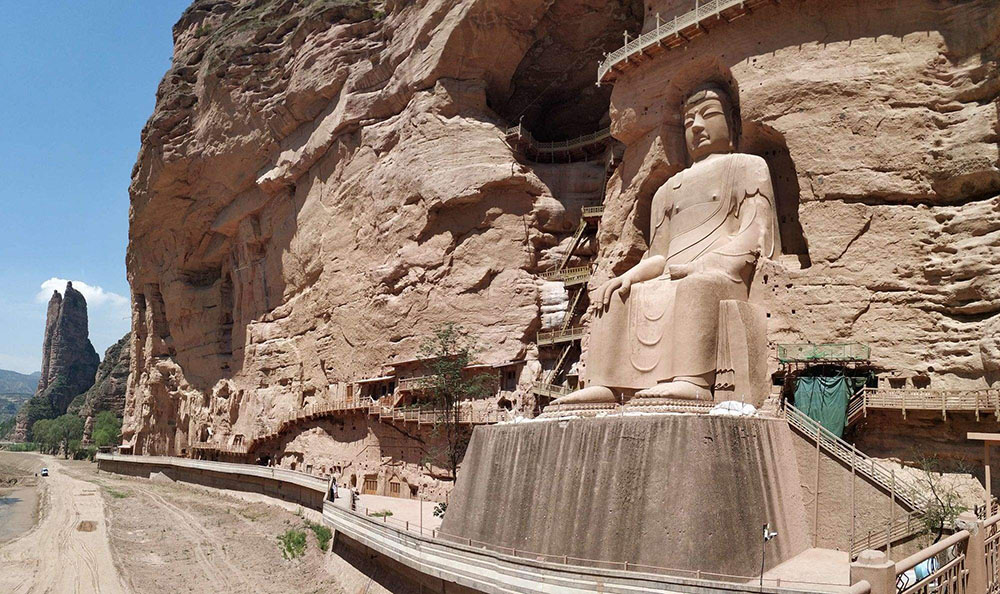
Bingling Temple Grottoes.
Tickets: Prices, Booking, and Tips
Visiting the Bingling Temple Grottoes is a captivating experience that combines natural beauty with rich cultural heritage. Here’s everything you need to know about tickets, pricing, and tips for a smooth visit.
Ticket Information
To access the Bingling Temple Grottoes, you’ll need to purchase your tickets at the Liujiaxia Dam ferry terminal. It’s important to note that tickets cannot be bought at the grotto entrance itself, so be sure to plan ahead. The entrance fee is approximately 80 RMB, but some visitors may find discounts available, particularly for seniors.
Booking Your Visit
-
Ferry Ride: After securing your ticket, you’ll take a scenic boat ride across the dam to reach the grottoes. This ride lasts around 40 minutes and offers stunning views of the surrounding landscape. Keep in mind that the boats are typically 9-seater enclosed vessels, which may not be as speedy as one might expect, but they do provide a unique vantage point of the Yellow River.
-
Transportation: If you prefer a more direct route, consider hiring a private driver from Lanzhou or nearby cities. This allows for a more personalized experience, and you can skip the boat ride altogether. The journey takes approximately 3 hours one way, so an early start is recommended.
Tips for Your Visit
-
Timing: Try to visit early in the day to avoid crowds and enjoy a more tranquil experience. Mornings also provide beautiful lighting for photography.
-
What to Bring: Pack water and snacks, as there are limited facilities on-site. If you’re visiting in winter, dress warmly, as temperatures can drop significantly.
-
Exploration: Be prepared to walk. The grottoes are accessible via a series of steps and pathways. Wear comfortable shoes for the best experience.
-
Photography: The stunning scenery and intricate carvings make it a photographer’s paradise. Bring your camera or smartphone to capture the beauty of the statues and the surrounding landscape.
-
Respect the Site: As a UNESCO World Heritage site, it’s essential to respect the cultural significance of the grottoes. Follow any guidelines provided by staff and refrain from touching the sculptures.
By planning your visit thoughtfully and considering these tips, you can fully enjoy the wonders of the Bingling Temple Grottoes, making it a highlight of your travel itinerary in China.
How to Get There: A Complete Transportation Guide
Reaching the Bingling Temple Grottoes is both an adventure and a journey through stunning landscapes, offering travelers a unique glimpse of China’s rich cultural heritage. Here’s a comprehensive guide on how to navigate your way to this remarkable site.
Getting There
1. Starting Point: Lanzhou
Most international travelers will likely begin their journey in Lanzhou, the capital of Gansu Province. This city is well-connected by air, rail, and road, making it an excellent launch pad for your trip to the Bingling Temple Grottoes.
By Air
- Flights to Lanzhou: Major airlines operate flights to Lanzhou Zhongchuan International Airport from various cities in China, including Beijing, Shanghai, and Guangzhou.
- Airport to City Center: The airport is approximately 70 kilometers from downtown Lanzhou, and taxis or airport shuttles can take you to the city center.
2. Traveling to Bingling Temple Grottoes
Once in Lanzhou, you have a couple of options to reach Bingling Temple Grottoes, located about 80 kilometers southwest of the city.
By Private Car
- Charter a Vehicle: For a more personalized experience, consider hiring a private driver. This allows you to explore at your own pace and enjoy the scenic drive along the Yellow River.
- Travel Time: The journey takes roughly 1.5 to 2 hours, depending on traffic and road conditions. Along the way, you’ll be treated to breathtaking views of the river and mountains.
By Public Transportation
- Bus Services: You can take a bus from Lanzhou to Tianshui, which operates frequently throughout the day. From Tianshui, you can catch a local bus or hire a taxi to the Bingling Temple Grottoes. However, this option may require a bit more time and effort.
- Travel Tips: Make sure to check the bus schedules in advance, as they can vary.
3. Final Leg: Boat Ride to the Grottoes
Upon arrival at the Liujiaxia Reservoir, you will need to take a boat to reach the grottoes.
- Boat Ride: Tickets for the boat must be purchased at the ferry terminal near Liujiaxia Dam. The boat ride lasts approximately 40 minutes and offers scenic views of the surrounding landscapes.
- Walking to the Grottoes: After disembarking, a short walk (with some steps) leads you to the entrance of the grottoes, where you can begin your exploration of the ancient Buddhist art.
Important Considerations
- Tickets: Ensure you buy your boat tickets at the ferry terminal, as they are not available at the grotto entrance.
- Timing Your Visit: To avoid crowds, it’s advisable to start your journey early in the day. An early start allows you to enjoy the serene beauty of the grottoes with fewer visitors.
- Weather Preparedness: Depending on the season, be sure to dress appropriately. Winter temperatures can drop significantly, so layers are recommended.
Conclusion
Visiting the Bingling Temple Grottoes is a rewarding experience that combines cultural heritage with stunning natural beauty. Whether you choose to drive or take public transportation, the journey promises to be just as memorable as the destination itself. Plan ahead, enjoy the ride, and immerse yourself in the tranquility of this extraordinary site.
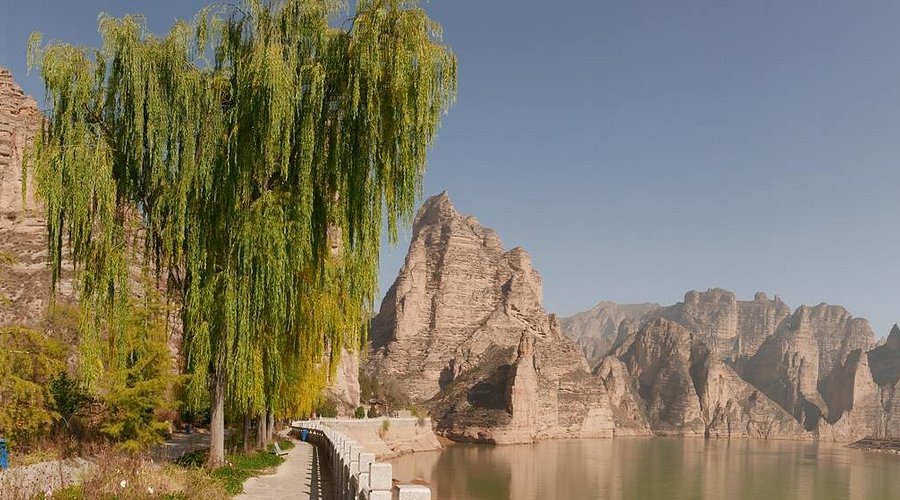
Bingling Temple Grottoes.
Local Cuisine and Accommodation Nearby
When exploring the breathtaking Bingling Temple Grottoes, it’s essential to also indulge in the local flavors and find cozy accommodations nearby. Here are some delightful recommendations to enhance your visit.
Culinary Delights
- Niu Rou Mien (Beef Noodles)
-
A must-try dish in the region, Niu Rou Mien features tender beef served over chewy noodles in a flavorful broth. Many travelers rave about this dish, especially after a day of exploring the grottos. You can find excellent local eateries serving this delicacy near the Liujiaxia Dam, where you can stop for a bite after your boat ride.
-
Local Snacks
-
As you venture through Tianshui, look for street vendors selling local snacks. Try jiaozi (dumplings) or baozi (steamed buns) filled with meat or vegetables. These are not only delicious but also an affordable way to taste the local cuisine.
-
Qin Cuisine
- Don’t miss the chance to experience traditional Qin cuisine, which often includes dishes made with fresh ingredients from the Yellow River region. Look for restaurants that offer seasonal dishes and local specialties, showcasing the rich culinary heritage of Gansu province.
Places to Stay
- Liujiaxia Water Village Resort
-
Just a stone’s throw from the Bingling Temple Grottoes, this resort provides comfortable accommodations with stunning views of the Yellow River. Ideal for both relaxation and adventure, it offers amenities such as a swimming pool and guided tours to the nearby grottos.
-
Tianshui Yushui Hotel
-
Located in Tianshui, this hotel combines modern comfort with traditional Chinese hospitality. It’s a great base for travelers looking to explore the area. The hotel often features a restaurant serving local dishes, making it convenient for guests to enjoy authentic cuisine without venturing far from their rooms.
-
Bingling Grottoes Scenic Area Hotel
- For a unique experience, consider staying within the scenic area itself. This hotel offers basic accommodations close to the site, allowing for easy access to the grottos at sunrise or sunset. It’s perfect for those who want to immerse themselves in the tranquil beauty of the surroundings.
After a day of exploring the fascinating history and stunning landscapes at Bingling Temple Grottoes, treating yourself to the local cuisine and a comfortable place to rest will undoubtedly enrich your travel experience. Enjoy your adventure in this remarkable part of China!
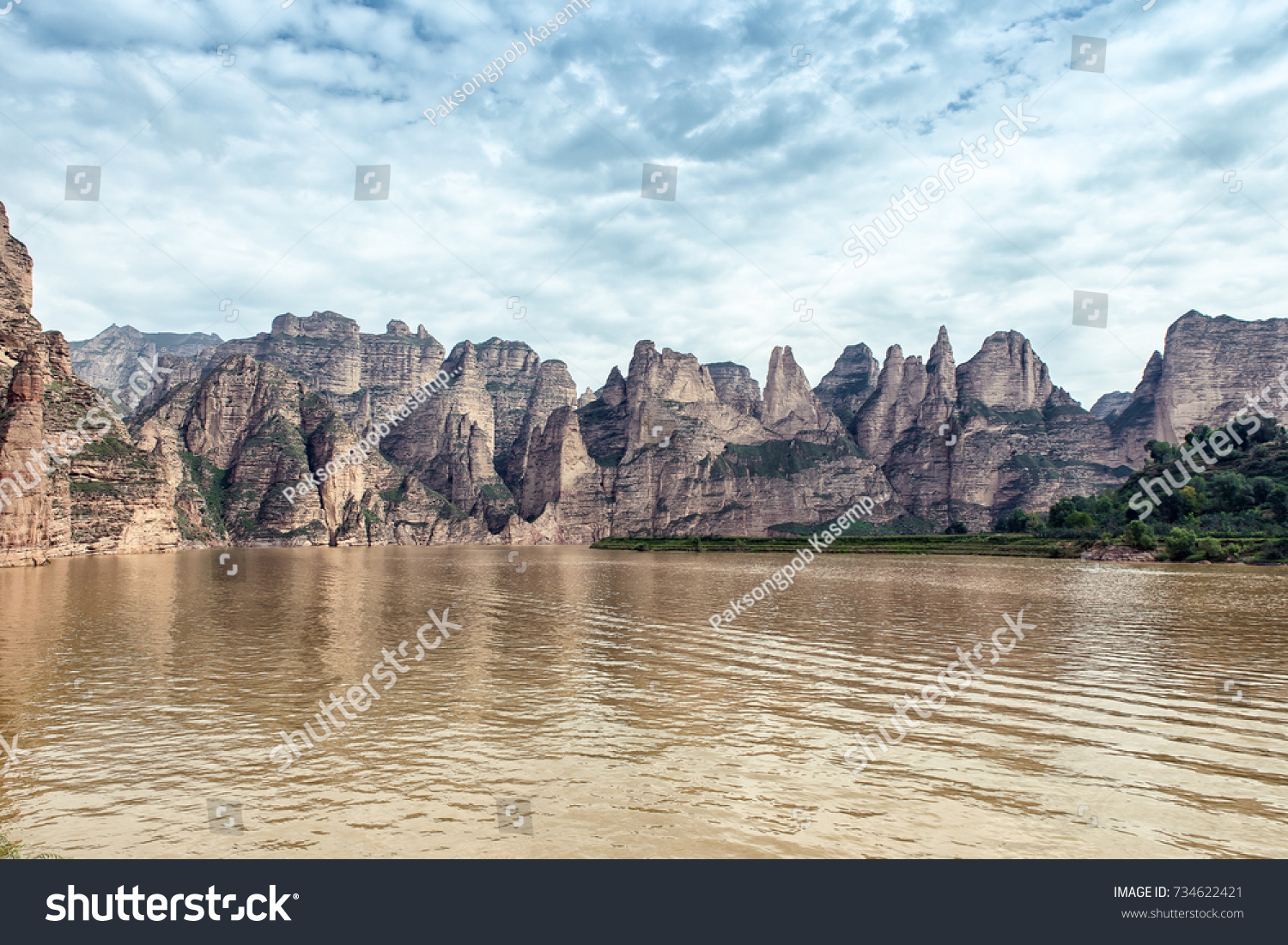
Bingling Temple Grottoes.
Frequently Asked Questions
Frequently Asked Questions about Bingling Temple Grottoes
1. How do I get to Bingling Temple Grottoes?
To reach Bingling Temple Grottoes, most travelers start their journey from Lanzhou. The most common way is to charter a car or take a private driver. Alternatively, you can take a speedboat from the Liujiaxia Dam, which offers stunning views of the Yellow River along the way.
2. Is it necessary to book a tour, or can I visit independently?
While booking a tour can simplify logistics, it is entirely possible to visit the grottoes independently. Just be prepared for some planning, such as arranging transportation and purchasing tickets at the ferry terminal near the dam.
3. What should I expect in terms of the grottoes’ condition?
The Bingling Temple Grottoes are well-maintained and clean. Although some statues have undergone restoration, many original features remain intact, showcasing a range of artistic styles from different dynasties.
4. Are there any facilities available at the site?
Yes, there are clean, Western-style toilets available on-site. However, it’s advisable to bring your own snacks and water, as options may be limited.
5. What is the best time of year to visit?
The site can be visited year-round, but the ideal time is during the spring and autumn months when temperatures are milder. Winter can be quite cold, so if you visit then, be sure to dress warmly.
6. How long should I plan to spend at the grottoes?
A typical visit can last anywhere from 2 to 4 hours, depending on how thoroughly you wish to explore the various caves and sculptures. If you enjoy photography or wish to soak in the scenery, consider allowing extra time.
7. Do I need to buy tickets in advance?
Tickets are purchased at the ferry terminal where the boats depart for the grottoes. It’s recommended to buy your ticket there rather than at the entrance of the grottoes themselves.
8. Are there any nearby attractions worth visiting?
Yes, nearby attractions include Liujia Gorge and the scenic landscapes surrounding the area. Consider taking some time to explore these additional sites to make the most of your trip.
Final Thoughts on Your Trip
As you conclude your journey to the Bingling Temple Grottoes, take a moment to reflect on the myriad experiences that this extraordinary site offers. Nestled amidst the stunning landscapes of Tianshui, these ancient grottos serve as a testament to the rich tapestry of Buddhist art and history, spanning centuries and dynasties. From the awe-inspiring Maitreya Buddha to the intricate sculptures that adorn the caves, each corner whispers tales of devotion and craftsmanship that have withstood the test of time.
The adventure to reach the grottoes, whether by speedboat across the shimmering Yellow River or through scenic drives, adds a layer of excitement to your visit. Embrace the moments spent wandering the serene pathways, capturing photographs of breathtaking scenery, and immersing yourself in the tranquility of this cultural oasis far from the usual tourist trails.
While some aspects may feel more polished than hidden gem-like, the charm of Bingling Temple Grottoes lies in their harmonious blend of artistry and nature, inviting you to ponder the spiritual significance that has drawn pilgrims and travelers alike for generations. As you leave, carry with you not just the memories of magnificent statues and dramatic landscapes, but also a sense of connection to a profound heritage that continues to inspire. So long, and may your next adventure be just as enriching!